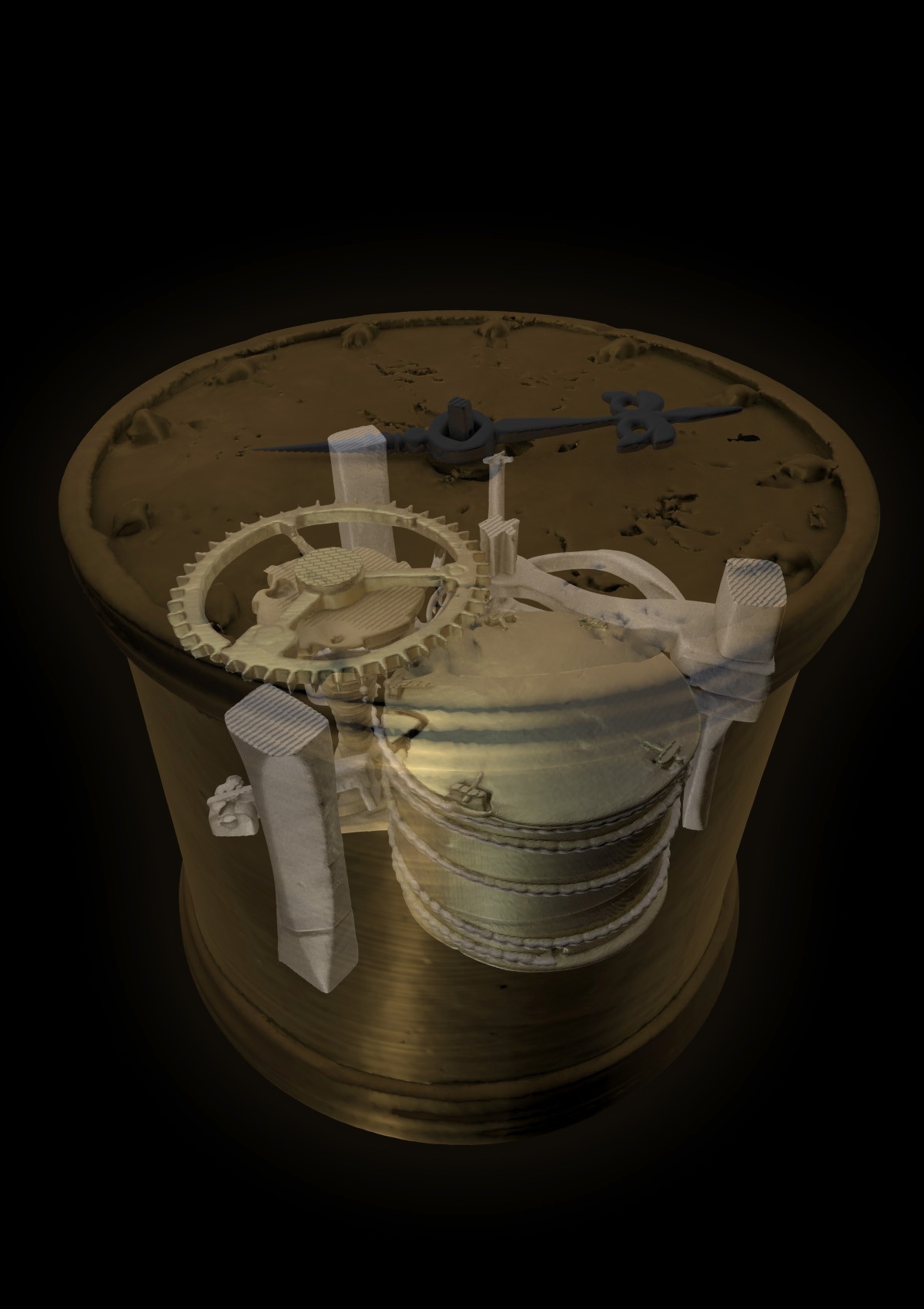
Date |
16th century (clockwork), around 1850–1895 (housing) |
Origin |
probably southern Germany |
Artist / manufacturer |
Henlein, Peter (attributed) |
Inventory no. |
|
Customer |

Date |
16th century (clockwork), around 1850–1895 (housing) |
Origin |
probably southern Germany |
Artist / manufacturer |
Henlein, Peter (attributed) |
Inventory no. |
|
Customer |

Technology |
3D computed tomography |
System |
Micro-CT |
Objective |
Clarify the actual age of the clock through accurate nondestructive evaluation of its internal components. |
The Henlein pomander watch is a mechanical clock with a mainspring and fusee, housed in a box-shaped case.
On the inside lid of the clock, there is a forged signature of Nuremberg clockmaker Peter Henlein together with the year 1510. If the engraved date were correct, the Henlein clock would be the oldest small-format portable pocket watch in the world.
X-rays by Fraunhofer EZRT revealed that the clockwork mechanism dates back to Peter Henlein’s time, but the clock itself wasn’t added until the 19th century. This makes it a “compilation” of older and newer components.